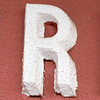#5 Discover Flickr

Photo sharing websites have been around since the '90s, but it took a small startup site called Flickr to catapult the idea of “sharing” into a full blown online community. Within the past year, Flickr has become the fastest growing photo sharing site on the web and is known as one of the first websites to use keyword “tags” to create associations and connections between photos and users of the site.
For this discovery exercise, you are asked to take a good look at Flickr and discover what this site has to offer. Find out how tags work, what groups are, and all the neat things that people and other libraries are using Flickr for.
Discovery Resources:
- Flickr Learn More tour (6 steps)
- Mediamazine Flickr Tutorials
- Flickr: Popular tags Interesting- Last 7 days
- Flickr Services (3rd party applications & mashups)
Discovery Exercise:
In this discovery exercise, you have two options…
1. Take a good look around Flickr and discover an interesting image that you want to blog about. Be sure to include either a link to the image or, if you create a Flickr account, you can use Flickr's blogging tool to add the image in your post. Another option you have for including images in your post is to use Blogger's photo upload tool.
-- OR --
2. If you're up to an easy challenge ... create a Free account in Flickr and use a digital camera to capture a few pictures of something in your department. Upload these to your Flickr account and tag at least one of the images "oulibraries" and mark it public. Then create a post in your blog about your photo and experience. Be sure to include the image in your post. Once you have a Flickr account, you have two options for doing this: through Flickr's blogging tool or using Blogger's photo upload feature.
**Remember: photos in your Flickr account may not be publicly searchable right away; Flickr can take 1-2 weeks to authenticate your new Flickr account.
So go ahead, explore the site and have some Flickr photo fun and if you're interested, why not check out this Wired story.
PS: A quick word about photo posting etiquette - When posting identifiable photos of other people (especially minors) is it advisable to get the person's permission before posting their photo in a publicly accessible place like Flickr. Never upload pictures that weren't taken by you (unless you have the photographer's consent) and always give credit when you include photos taken by someone else in your blog.
#6 More Flickr Fun






Like many web 2.0 sites, Flickr has encouraged other people to build their own online applications using images found on the site. Through the use of APIs (application programming interfaces), many people have created third party tools and mashups* that use Flickr images. Here are just a sampling of a few ...
- Mappr - allows you to take Flickr images and paste them on a map
- Flickr Color Pickr - lets you find public photos in Flickr that match a specific color.
Discover more mashups, web apps, and Flickr tools.
Discovery Exercise:
Your discovery exercise for this “thing” is to:
1. Explore some of the fun Flickr mashups and 3rd party tools that are out there.
2. Create a blog post about one that intrigues you.
Personally one of our favorite tools is FD Toys’ Trading Card Maker. And there’s a ton of librarians out there that have created their own Librarian Trading Card.
So have some fun discovering and exploring some neat little apps. And if you're up to the challenge while you’re at it, why not create a trading card of your own!
* Mashup Note: Wikipedia offers some great articles that explain mashups. Basically they are hybrid web applications that take features from one application (like Flickr) and mash it up with another (like a map). In this example, you get Mappr (http://mappr.com/)
PS: Flickr image created by Spell with Flickr.
#7 Blog About Technology
#3 Create a Blog in 3 Steps
 Now that you’ve done some exploring around this website and understand how this program will work, it’s time to setup your very own personal blog to begin recording your thoughts, discoveries and exercises.
Now that you’ve done some exploring around this website and understand how this program will work, it’s time to setup your very own personal blog to begin recording your thoughts, discoveries and exercises.
1. Create an account (view screenshot)
2. Name your blog (view screenshot)
3. Select your template. (view screenshot)
- To add posts: The maintenance interface that you will use to add posts, edit or change your blog is accessed online at http://www.blogger.com/ Be sure to write down your login and password.
- Naming your blog: If you want to blog anonymously (which is fine!), do not use your name as part of your blog address or profile.
- To view your blog: Your blog address is http://(xxxx).blogspot.com, (xxxx)=the unique identifier you entered in Step 2. Be sure to also write down your blog address.
If you run into problems or would like more information about blogs and using Blogger here are some discovery resources you can use:
OK -- Now, it’s your turn...
Discovery Exercise:
1. Set up a blog for yourself through Blogger.
2. Add a test post or two. Use one of your test posts to create an entry about the habits among the 7 and 1/2 lifelong learning habits that are easiest and hardest for you & why.
3. Have fun!!!!
IMPORTANT NOTE: How you choose to identify yourself on your blog is your choice. You can blog under a screen name, anonymously, or as yourself. However, in order to qualify for the staff incentives and the grand prize drawing, you will need to register your blog using the directions on the "Participants" page.
* Use of Blogger is only a recommendation. If there is another blog hosting site that you are more comfortable with, please feel free to use it.
#4 Register Your Blog
But how do you qualify? Good question! By registering your blog and writing posts to it, recording your progress on each of the 23 things. For the sake of simplifying this process for Ohio University Libraries staff involved, follow the instructions for registration on the Participants page.
If you do not want your blog to appear on the Participants page, that's ok! Follow the instructions for private blogging at the end of the registration section. But we encourage you to share your blog if you're not too shy; we are all trying new things!
So, here’s to Thing #4 – why not hop on over to the Participants page now and register your blog. It’s really that easy and just think, now there’s only 19 more things to go!
Welcome to Learning 2.0!

Welcome to Learning 2.0! We are glad you are participating in this exciting exploration of new online technologies. Please plan to attend one of the two scheduled Kick-Off Meetings that should be on your Corporate Time calendar. Do not attend both! They will cover the same information.
Please talk to your supervisor or Department Head to coordinate your department's attendance at the Kick-Off Meetings. He or she can help you determine which session you should attend.
Stay tuned to this page for more information on the "23 Things" that we will be working on throughout the next 14 weeks. And remember, there will be prizes!!
#1 Intro to Learning 2.0
 Welcome to the Ohio University Libraries' Learning 2.0 program & blog. Chances are if you've found your way here you're either:
Welcome to the Ohio University Libraries' Learning 2.0 program & blog. Chances are if you've found your way here you're either: 1. a member of Ohio University's library staff who is participating in the Learning 2.0 Challenge.
2. interested in learning about and playing around (yes, playing is allowed in libraries) with some new web 2.0 tools that will help you expand your information literacy toolbox.
- or -
3. are just interested in earning a cool USB MP3 player and possibly winning a new laptop!
Either way… we're glad you're here!!
Learning 2.0 is an online learning program that encourages staff to learn more about emerging technologies on the web that are changing the way people, society and libraries access information and communicate with each other.
To familiarize yourself with this project, be sure to read the About page.
The FAQs should answer most of your questions about this program. If not, then please send a message to the program administrators and we will add it to the list!
So fasten your seat belts, grab your mouse and get ready for a discovery adventure… and remember, it's OK to play in the library and have fun!
#2 Lifelong Learning

These habits, which we’ve called the Seven and 1/2 Habits of Highly Successful Lifelong Learners, will provide you with a refresher on what it means to be a lifelong learner.
Discovery Exercise:
**Please do not provide feedback using the "We Value Your Opinion" link at the end of the tutorial. It will not go to us, but to the PLCMC Library administrators!
1. Make sure you have headphones or speakers attached to your computer.
2. Open up the 7 & 1/2 Habits online tutorial and view the online tutorial.
**You are not required to complete the Learning Contract, but it is highly recommended to keep yourself on the Lifelong Learning track!
Exercise Hint: To view the attachments (Learning Contract and 7 1/2 Habits) at the top of the tutorial, hold down the control key on your keyboard when you click on a link! This will deactivate the pop-up blocker (*bloop* noise)
As you watch and listen, write down which habit among the 7 & 1/2 that is easiest for you and which is hardest. You will use your personal blog (which you will set up next week) to post your thoughts about lifelong learning.
Have fun! If you haven't jumped on board yet, it's never too late to become a lifelong learner.
Next Week: Creating your blog so you can begin tracking your journey!



